Bolnisi Sioni
- Categories:
- Religious Sights
- General info
-
Bolnisi Sioni church is located some 70 km south of Tbilisi, in the historical province of Kvemo (Lower) Kartli, on the left bank of Poladauri river, in the village of Bolnis-Khachini. As all other churches and cathedrals in Georgia known under the mane of Sioni, this one is also dedicated to the Virgin. Bolnisi temple is one of the largest basilicas in Georgia. It is the important and famous monument for many aspects with enormous historic significance and artistic influence that lasted for centuries. At the very first glance the sight is captured by the astonishing color of its large walls, faced with neatly hewn turquoise – greenish tuff slabs. The whole construction is massive, lengthy, deeply rooted in the earth. Pitched roof and solid walls create impression of strength and stability. At the same time there is no feeling of pressing weight – just the opposite, despite their solidity these dazzling walls radiating joy and buoyancy.
Bolnisi Sioni is a three-nave basilica with the extended semi-circle apse of the sanctuary, with open arched gallery on the whole length of northern façade, coupled with minor arched gallery and baptizing room on the south. Naves are split by five pairs of cross shape columns. A small chapel attached to the church from the east is dated back to VIII c. It is well known, that the church was heavily damaged in 1643, during the invasion of Persians, when all vaults and partially the western wall were destroyed. Entire upper sections of the church together with vaults and other decayed sections were restored in the first half of XVII c., shortly after the invasion when basically brick was used as the construction material. Reconstruction was initiated by King of Kartli Rostom and his spouse – Queen Mariam. Western door has been cut through in those times, notable on the background of a huge wall due to its brickwork framing and sagittal arch.
In the closing decades of XVII c, Bishop of Bolnisi Nickolas once again refurbished the temple, when its interior was adorned with wall painting and a bell-tower was constructed next to it. In early XVIII c Bolnisi Eparchy was annulled due to almost total alteration of the population in this region, caused by harsh history and consequential massacre and/or resettlement of local Georgians.
Bolnisi Sioni has got several architecturally specific features, first of which is revealed in roofing system, where all three naves share a common two-pitched roof and the basilica-like profile is achieved by means of additional one pitched roofs covering the attached galleries. Second peculiarity is location of entrances, when the openings are cut through the longitudinal walls- one southwards and the other two – northwards instead of their traditional arrangement on western side (as it has been mentioned above, the western door was cut as late as in XVIIc.) Due to such positioning of the entrances internal space seems to be equally divided and both sides look congruent, as in the centric buildings. There are couple of other signs, common not only for basilicas but also for other constructions of those early times: neither protheses nor diaconicon exist, the baptizing room is separated from the rest of the internal space of the church; 3. There are open lunettes over the entrances; 4. arches and vaults are horseshoe – shape.
Besides purely architectural characteristics, Bolnisi Sioni is rather interesting monument due to its ornamentation. It is the first time when both sculptural and fretwork elements are used simultaneously in the construction decoration system. Their distribution is preplanned and follows the exact pattern – in the middle nave only columns adjacent to the sanctuary have got adorned caps. This definitely indicates the desire of an architect to make and spread several separate stresses. Risings reflect animal images – of course rather relatively, even the full scenes with animals. At the same time attention is focused around the cross – a symbol of the new faith. Both risings and fretwork have got geometric and floristic patterns that are absolutely mature artistically, indicating to sophisticated taste of the craftsmen. Another reason of Bolnisi Sioni fame is the earliest survived Georgian inscriptions, preserved on the walls of the temple. One of the inscriptions fixed on the eastern façade, just over the sanctuary window mentions Bishop David, initiator and organizer of the construction, while another one, adjusted above the northern-eastern entrance, mentions other historical persons and indicates duration of construction works. According to that message the church was built in between 478 - 493 AD After more then two hundred years of absolute abandonment the church has become active. In the late 80-ies of the last century Bolnisi Eparchy was re-established.
BUSINESS REVIEWS
There are no reviews at the moment
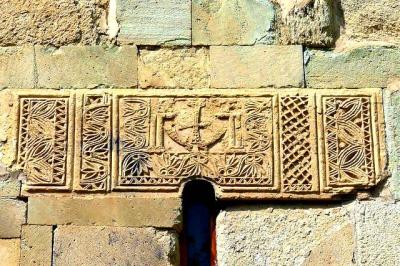

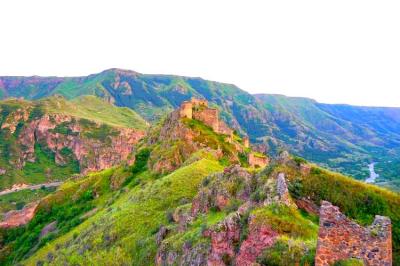
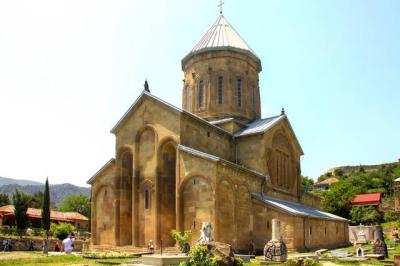
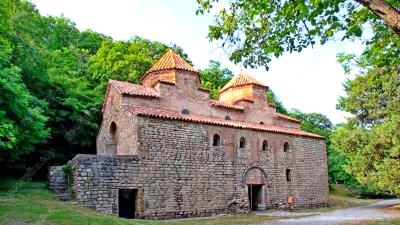
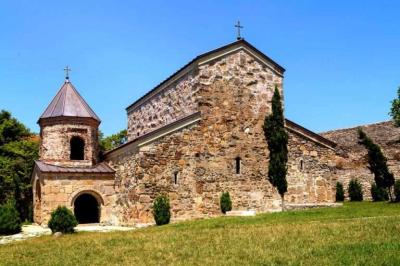
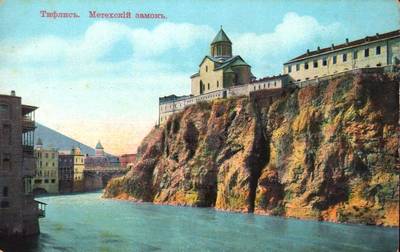
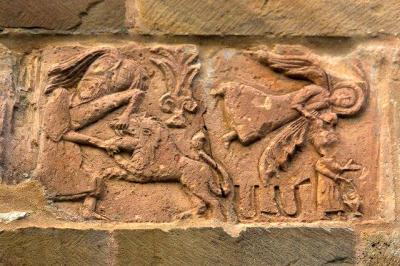
Bolnisi Sioni